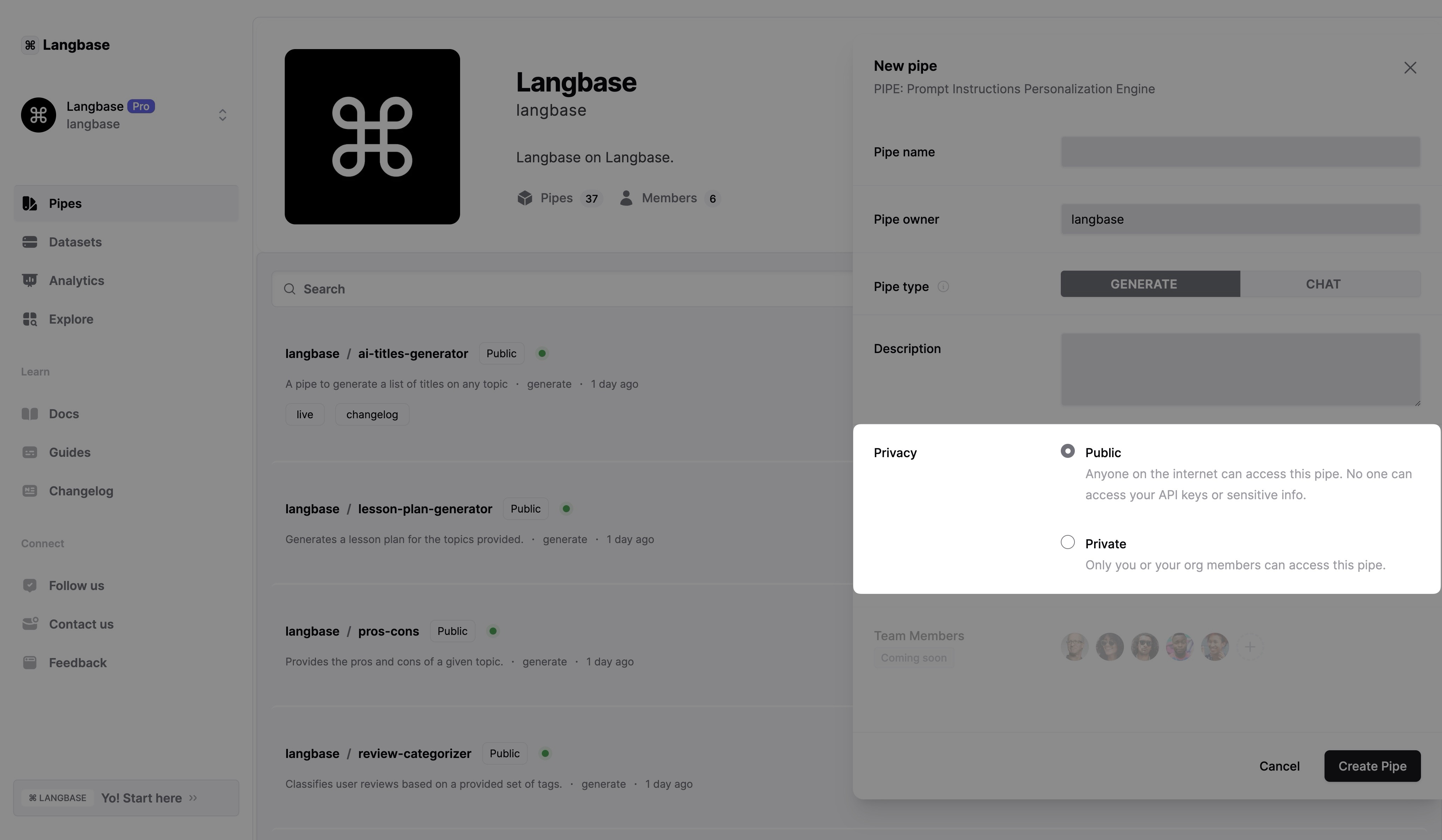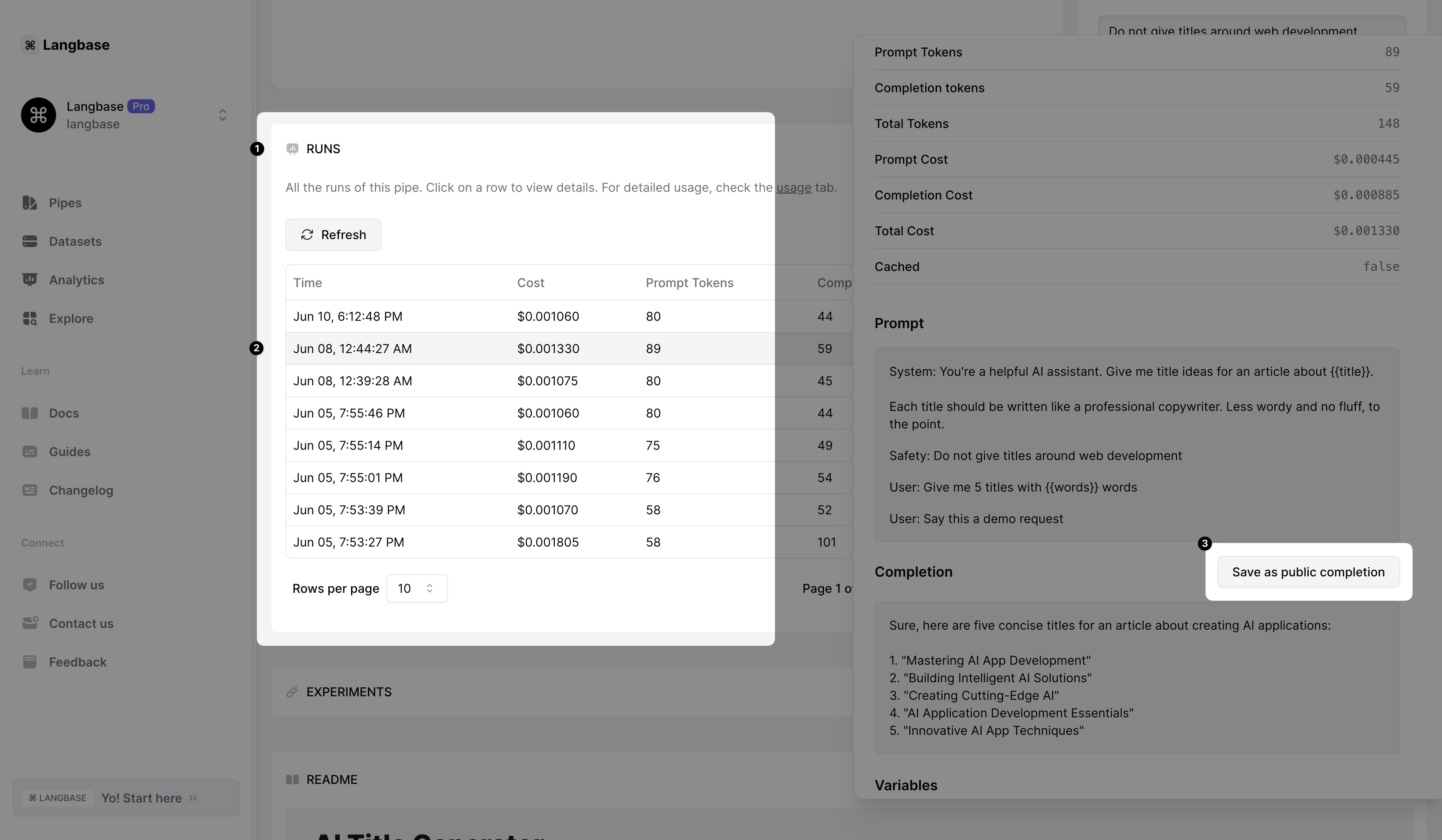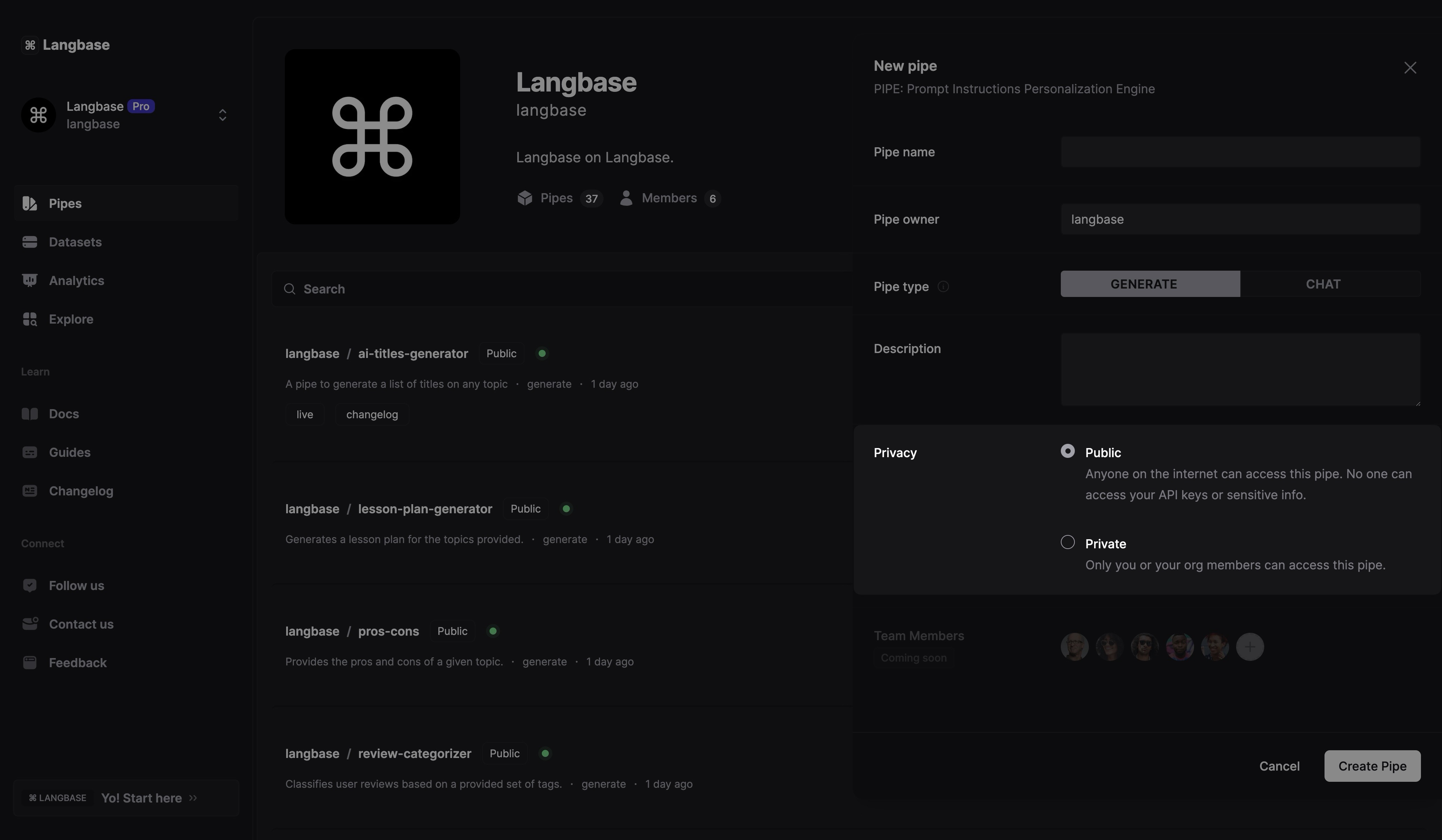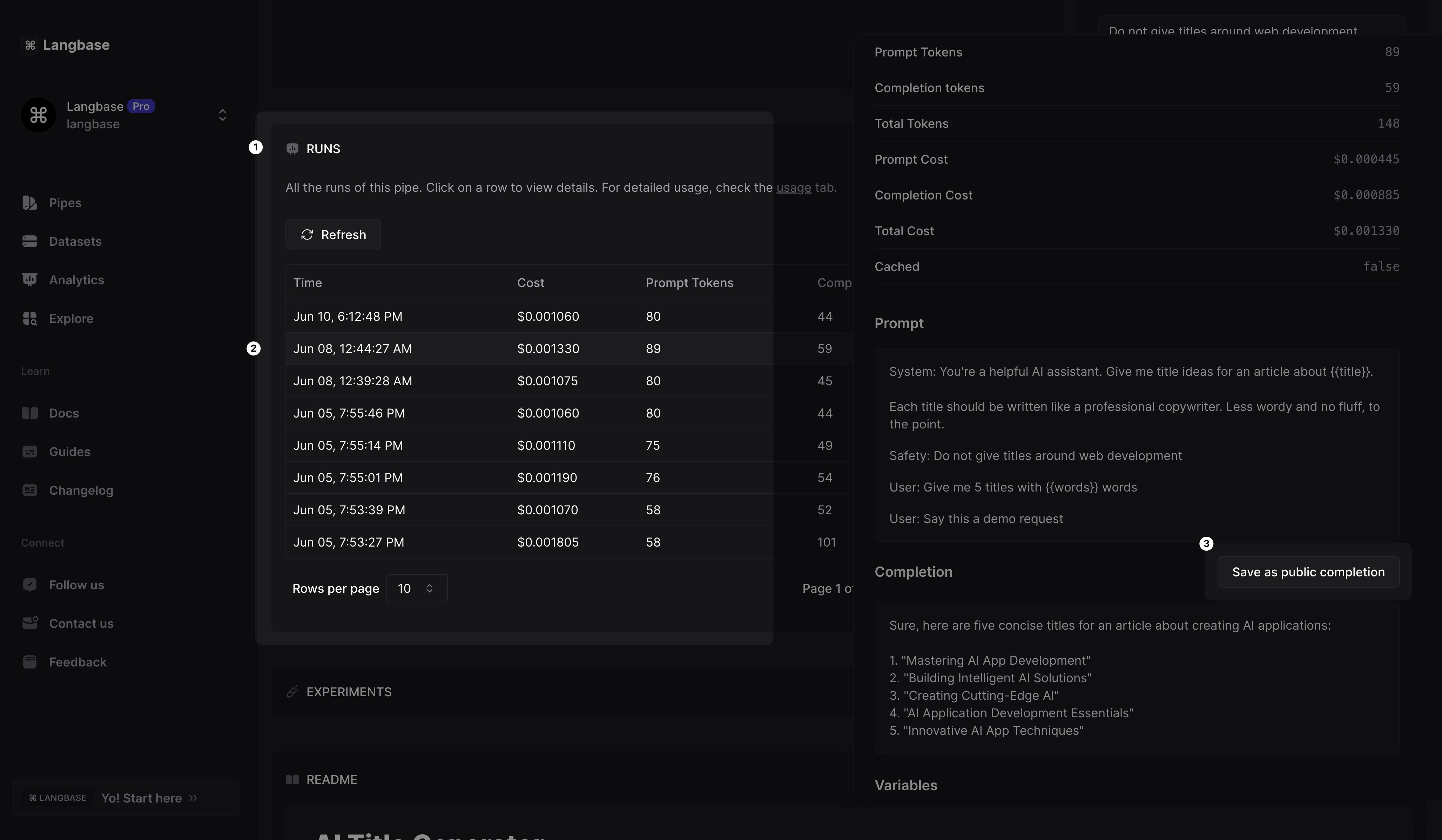Open Pipes
Langbase now allows users to create and share Open pipes, making it easier to collaborate and share your work. Both user and organization Pipes can be made public, enabling you to share them with anyone.

When creating a new pipe, you now have the option to set its privacy in the Privacy section, allowing you to choose between making your pipe open or private to other users.
Public
Anyone with the link can view and fork your pipe to their account. Open pipes are visible to anyone through search engines (Google, Bing, etc.), and all information about the pipe, except for sensitive data, is visible to everyone.
Private
Only you or your organization members can access the pipe. Private pipes cannot be shared with others and are visible only to you or your organization members.
Features of Open Pipes
- Visibility: Anyone can view the pipe.
- Forking: Anyone can fork the pipe to their account.
- Metrics: Anyone can view the total number of runs, tokens, and contributors.
- Information: Anyone can view the pipe's description and tags.
Pipe Sensitive Data
Sensitive data remains private and includes:
- Pipe API keys (or LLM API keys)
- Pipe runs and messages
- Pipe logs and settings
- Pipe cost and billing information
- Runnable playground of a pipe
Managing Existing Pipes
All existing pipes are private by default. You can change the privacy settings for each pipe from the pipe settings, making it open or private as needed.
You can share both your personal profile and your organization profile. Only open pipes will be visible to others.
Your public profile includes:
- Profile Picture: Upload a profile picture to make your profile more personal.
- Bio: Share a little bit about yourself with the Langbase community.
- Public Pipes: All the public pipes you've created are listed on your profile
Example
Check out our first public pipe: AI Title Generator
Public Runs allows you to share live demonstrations of your pipes without incurring any LLM API costs. Demonstrations are streamed directly from Langbase.
Using Public Runs
- Once your Pipe is public. You can use Public Runs as a feature
- In your Pipes window, scroll down and go to the "Runs" section.
- Choose one of the runs you have conducted from your experimentation list.
- Scroll down in the selected run's details and click on the "Save as completion" button.

Sharing your Public Pipes
After saving the run as a completion, share your Pipe URL with others to showcase a live demonstration streamed from Langbase.
What is a public pipe?
A public pipe or an open pipe is a pipe that is visible to anyone with the link or through search engine (Google, Bing, etc.). Anyone can view the pipe and fork it to their account. Except for the sensitive data, all the information about the pipe is visible to everyone.
What about my existing pipes?
All your existing pipes are private by default. You can change the privacy settings for each pipe from the pipe settings.
Can I share my profile?
Yes, you can share your profile with anyone. Only your public pipes will be visible to others.
Can I share my org profile?
Yes, you can share your org profile with anyone. Only your org's public pipes will be visible to others.
Can I share my private pipe?
No, only public pipes can be shared with others. Private pipes are visible only to you or your org members.
Can I make my private pipe public?
Yes, you can change the privacy settings of your private pipe to public from the pipe settings. Or vice versa.
What's included in the Public Profile?
- Profile Picture: You can upload a profile picture to make your profile more personal.
- Bio: Share a little bit about yourself with the Langbase community.
- Public Pipes: All the public Pipes you've created are listed on your profile.
More public profile improvements on the roadmap are coming soon.

